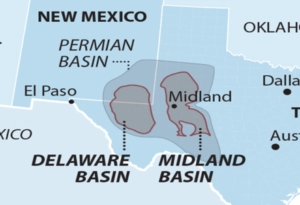As the 2024 U.S. presidential race heats up, the oil and gas industry has thrown significant financial weight behind Donald Trump’s campaign. Leading figures such as Kelcy Warren (Energy Transfer), Harold Hamm (Continental Resources), and Jeff Hildebrand (Hilcorp Energy) have become key financial backers, drawn by Trump’s pro-energy stance and commitment to roll back Biden-era climate regulations. Their support highlights a growing divide between the oil sector and the current administration’s climate policies, reflecting the industry’s belief that Trump will better protect its interests in the coming years.

The Oil Industry’s Support for Trump
Oil executives’ support for Trump is not without reason. During his first term, Trump was a vocal advocate for the energy sector, most notably brokering a deal with OPEC+ in 2020 to stabilize oil prices amid the COVID-19 pandemic. This move helped U.S. producers during a critical time, reinforcing the sector’s confidence in Trump’s ability to safeguard oil and gas interests.
For executives like Warren and Hamm, Trump represents a return to a more favorable regulatory environment—one where restrictions on drilling and pipeline development are eased, allowing the industry to thrive. These backers also see Trump’s promises to reverse key Biden administration policies, such as tighter regulations on methane emissions and restrictions on federal land leasing, as essential to maintaining the U.S. oil and gas sector’s global competitiveness.
ConocoPhillips’ Strategic Growth in a Dynamic Energy Market
At the same time, ConocoPhillips (NYSE: COP) stands out as one of the most profitable energy companies in the U.S., showing remarkable resilience and growth amid fluctuating oil prices. Recently, the company announced its $22.5 billion acquisition of Marathon Oil, a deal that strengthens its foothold in key U.S. oil basins like the Permian, Eagle Ford, and Bakken. This acquisition is poised to significantly boost ConocoPhillips’ production and free cash flow potential, positioning the company as a dominant player in the U.S. shale industry.
With a trailing twelve months (TTM) net income of $10.69 billion, ConocoPhillips is leveraging rising petroleum prices and a disciplined capital spending approach to deliver consistent shareholder returns, including robust dividends. As oil prices stabilize and demand recovers, ConocoPhillips is positioned for further growth, supported by its expansive asset base and a strategic focus on operational efficiencies.
EIA’s 2024 Energy Outlook: Shifts in Production, Demand, and Emissions
The Energy Information Administration (EIA) recently released its 2024 energy outlook, forecasting significant changes in production and consumption patterns across the U.S. energy landscape. Despite the oil sector’s optimism, U.S. natural gas production is expected to experience a slight decline next year, while domestic demand is projected to hit a record high. This is largely driven by increased liquefied natural gas (LNG) exports as global markets look to the U.S. for supply amid ongoing geopolitical tensions and energy transitions in Europe and Asia.
On the coal front, production is expected to fall to its lowest levels since the 1960s, reflecting the continued shift towards cleaner energy sources. As a result, U.S. carbon emissions are anticipated to decrease slightly in 2024 due to reduced oil and coal consumption. However, this trend may reverse in 2025 if economic conditions drive up energy consumption, particularly in the transportation and industrial sectors.
Conclusion
As 2024 unfolds, the energy sector’s political and market dynamics will play a crucial role in shaping the future of U.S. energy policy. Oil executives’ backing of Donald Trump underscores the industry’s desire for a regulatory environment more favorable to fossil fuels, while companies like ConocoPhillips are well-positioned to thrive in this ever-evolving landscape. At the same time, the EIA’s outlook reveals ongoing shifts towards cleaner energy, even as oil and gas remain critical components of the U.S. energy mix.
For energy investors and stakeholders, the next few years will be defined by how the sector balances these political and market forces to navigate an increasingly complex energy future.























